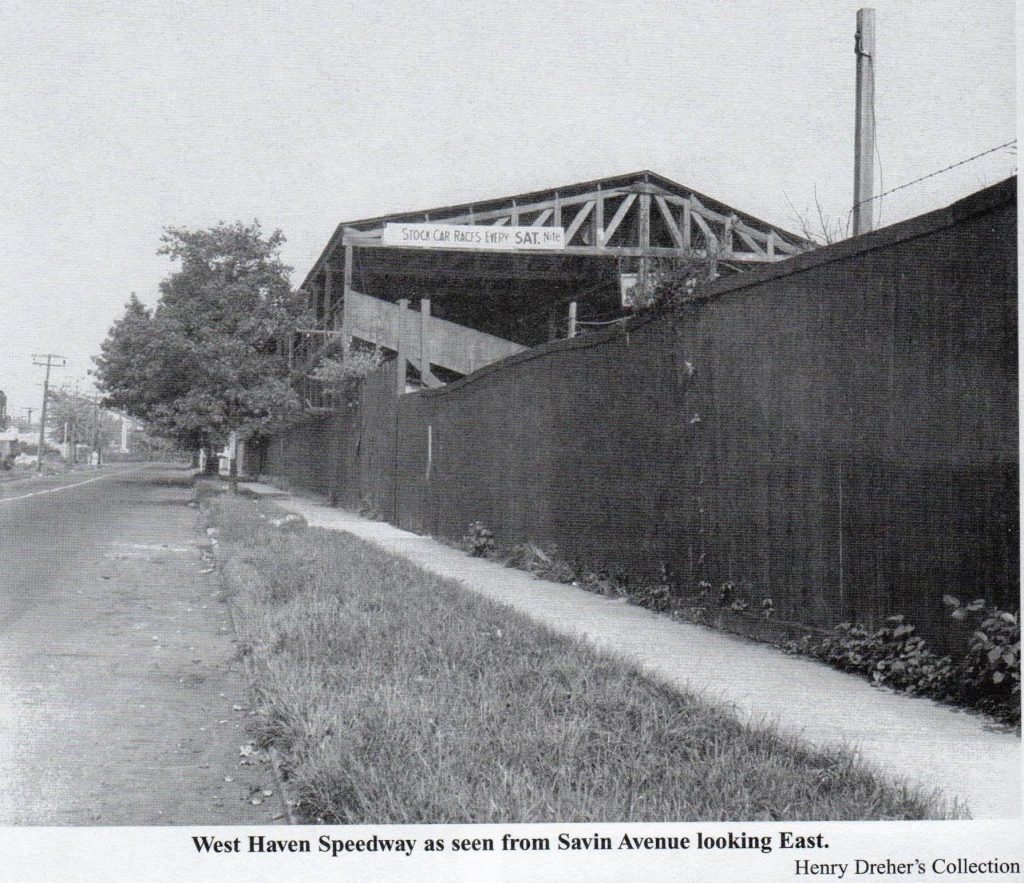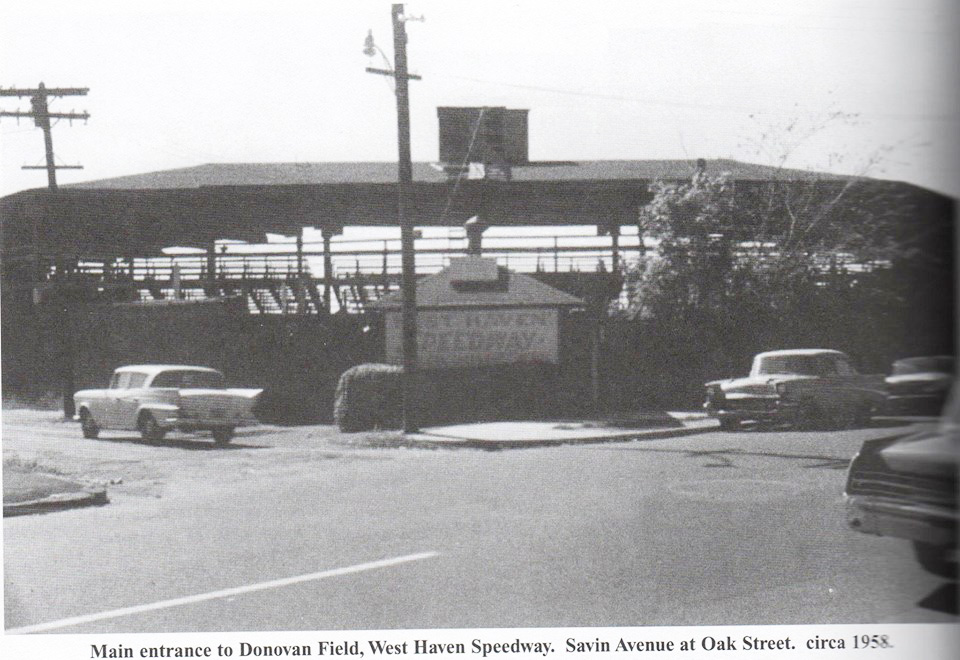By Dan Shine
Voice Columnist
West Haven Speedway

It is hard for anyone who visits Savin Rock today to imagine that an entire amusement park and a place called “Hot Dog Alley” were packed into those few grassy acres—and it is nearly impossible to imagine that on top of all that, there were a baseball field and a famous racetrack there as well! The baseball field was known as Donovan Field, in honor of “Wild Bill” Donovan–a popular manager of the New York Yankees during 1915-1917–who was killed in a train wreck in 1923.

Donovan Field became the home field of the West Haven Sailors, and an oddly-shaped 1/5 mile racetrack was eventually built around its perimeter. When the racetrack opened in 1935, it was merely a dirt track; but later that year, the track was paved. From then until 1941, the racetrack was the site of midget auto races; and later, it was the scene of weekly stock car races and various featured events.
During the World War II years, gasoline, tires, and auto parts were scarce, so auto racing paused for a while; but once peacetime was restored in 1945, the racetrack immediately returned to operation.
During the 1950s and 1960s, the popular drivers were Johnny “King” Cambino, “Wild Bill” Greco, Frank Belbusti, Bobby Rich, Tommy Sutcliffe, Billy Boston and Johnny Porto, to name just a few. After every race, the drivers would sign autographs for their fans. In fact, Johnny Cambino was so popular, that when he was married, a mock wedding was staged at West Haven Speedway for his fans.

The mechanics who provided their talent for these races came mostly from Greco’s Auto Parts and from Marshall’s Garage.
Every Saturday evening during the warmer months, a steady stream of cars would make their way down Kelsey Avenue to the West Haven Speedway, which was located at the east corner of Rock Street and Savin Avenue (now Rock Street and Captain Thomas Boulevard). Spectators lined up and paid a dollar to watch the races, and those without the money hopped the fence or sat in the “cheap seats.” At that time, Kelsey hill came all the way down to Savin Avenue—there are condominiums there today–and provided a good vantage point for most of the racing action—hence “cheap seats.”
Meanwhile, at the east corner of Kelsey Avenue and Savin Avenue, just across the street from the racetrack, the drivers and mechanics arrived with their race cars and prepared to race. The noise of those cars with their un-muffled exhausts was deafening. And one who watched all of this and was thrilled was an eight-year-old who often went, alone and against his parents’ orders, and who would one day set down these words and memories for others to enjoy.
As the races got underway, the noise could be heard all the way down the West Shore and up into West Haven center. Meanwhile, it is said that if one stood at the top of Meloy Hill, it was possible even there, to hear the noise and see the smoke rising as the races went on.
There were one hundred lap races with breathtaking finishes; and there were crashes; and there were demolition derbies; and there were “powder puff derbies” for the ladies, where all of the cars were driven only in reverse.
But by 1960, a movement had begun in West Haven to raze every structure in Savin Rock, in order to clean up the area. Following a referendum, demolition began, and in 1967, West Haven Speedway was no more. And with it went all the noise, smoke and excitement that were to be experienced on a warm summer night at Savin Rock.